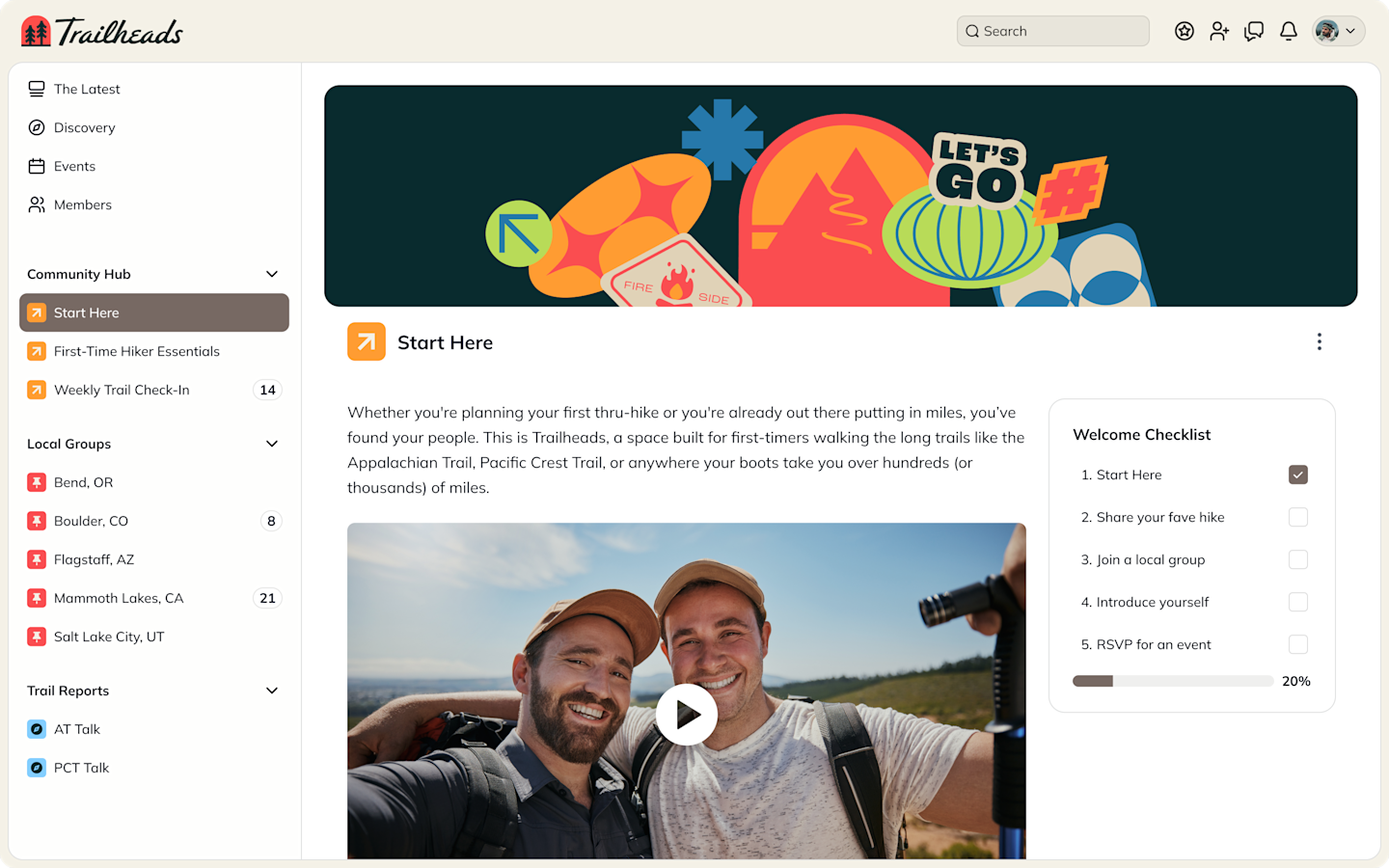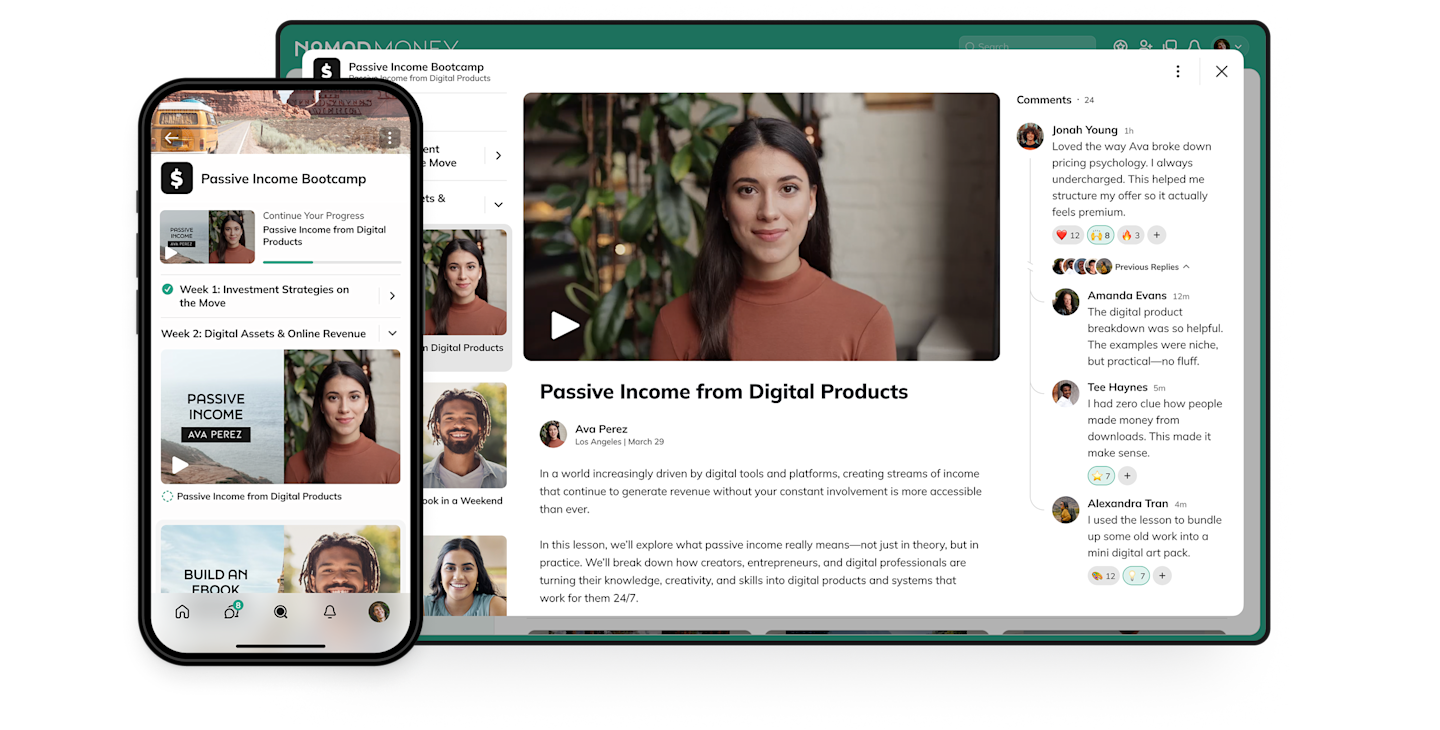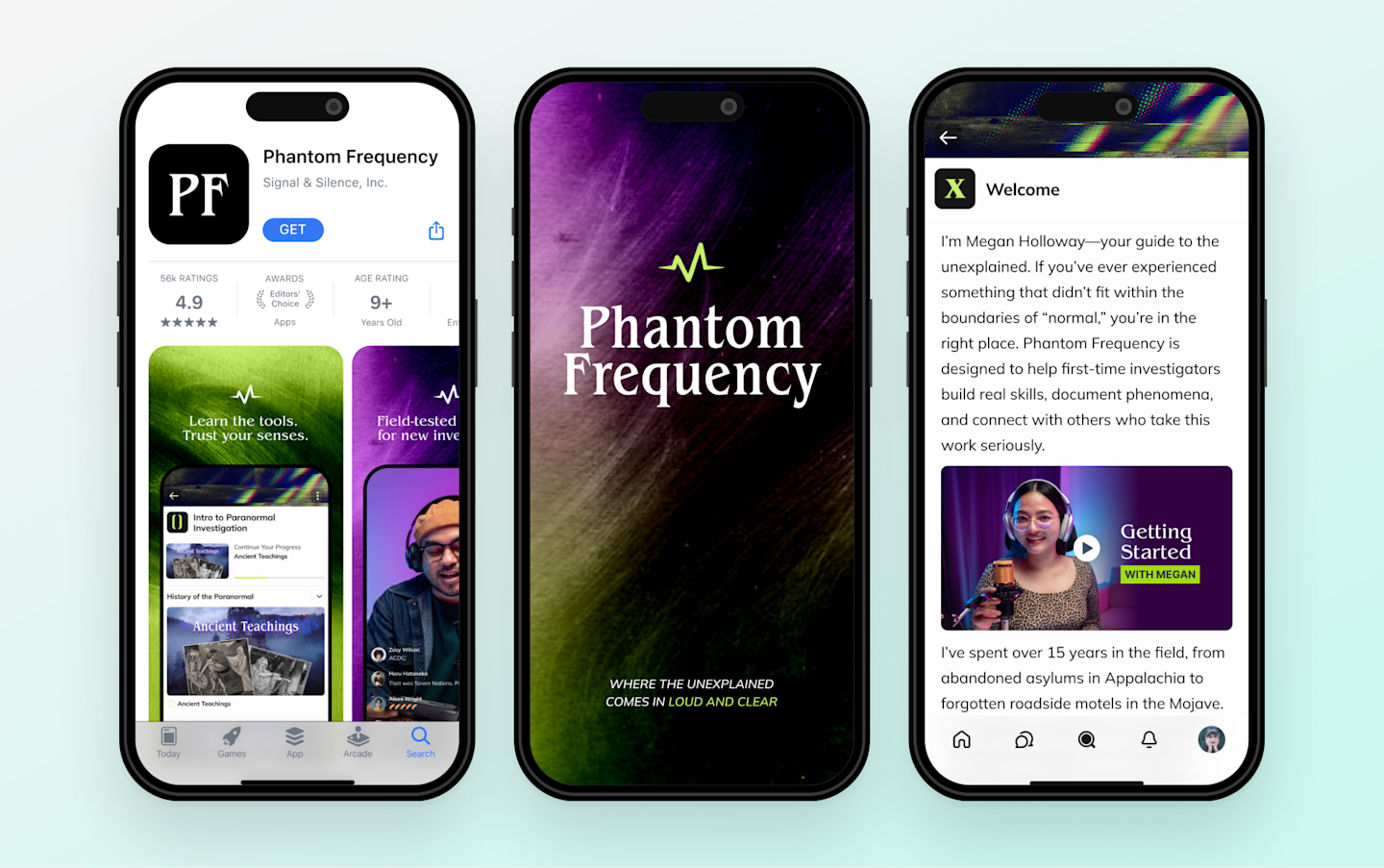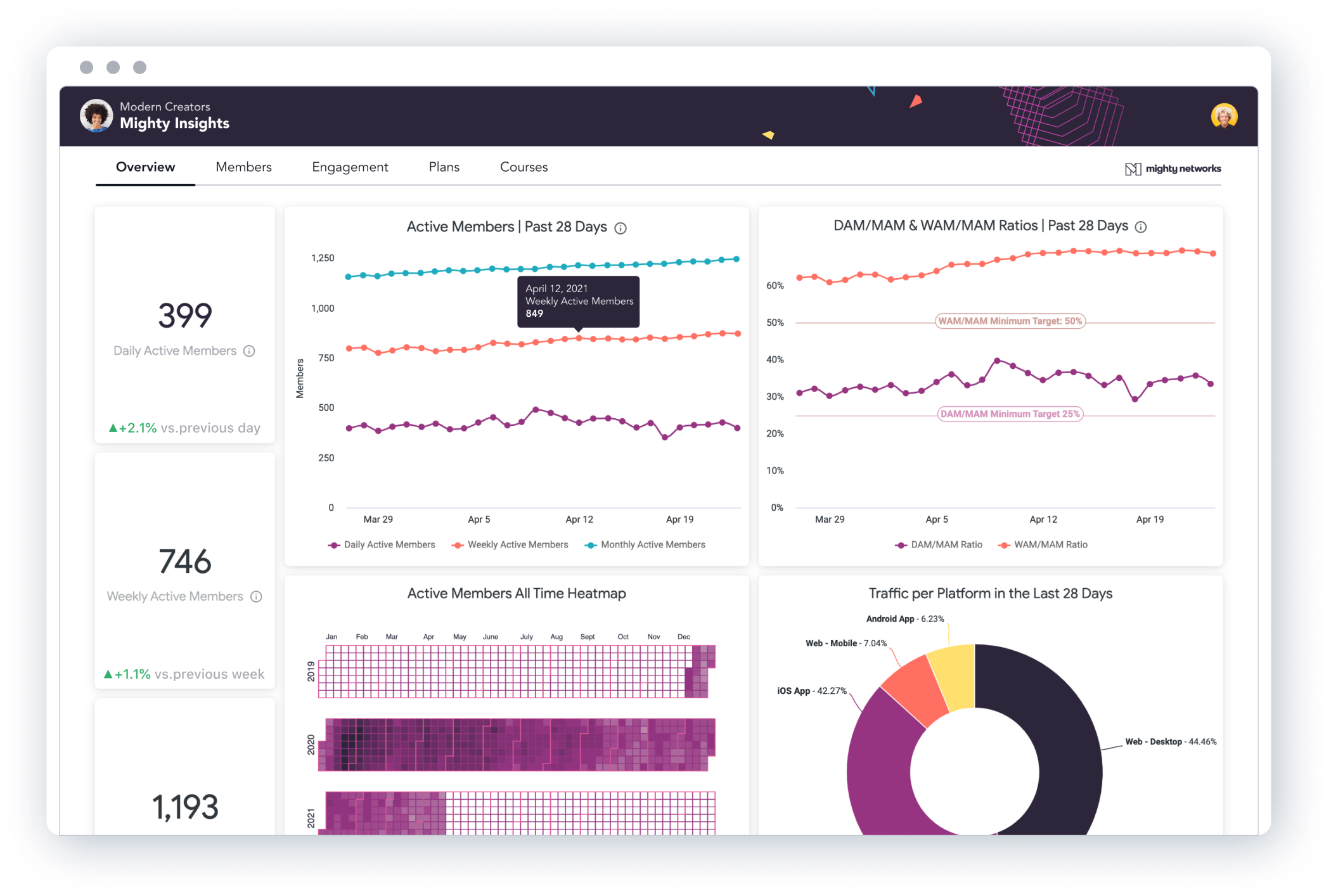Communities & Memberships
How to Build a Business Community in 2026
If you're ready to add a business community to your offerings, here's how to get started.
Author
Mighty Team
Last Updated
November 29, 2025

Table of Contents
In this article
Mindbody is an SAAS company that serves owners of wellness businesses, offering operations software that handles payroll, scheduling, staffing, and more. The product is fantastic. But Mindbody wanted a space for business owners to be able to come together to get support for the everyday problems they faced – not just software related, but with all things business.
The answer was Mindbody One, a community for owners of wellness and fitness businesses that’s grown to be 16,000 strong. And community members SHOW UP – it’s got an 89% retention rate. By building this community, Mindbody isn’t just providing support for users of their software. They’re also helping their business owners thrive across all aspects of their work, and creating a safe place where they can connect to like-minded people.
Mindbody’s powerhouse community is an example of a business community done right. But not all business communities are as awesome. You’ve probably given your email to a cashier somewhere along the line, only to find out that joining that company’s “community” basically meant getting spammed with offers on a regular basis. You likely smashed the “unsubscribe” button so fast your finger hurt.
It’s a shame so many businesses are struggling to build great communities, because there’s never been more potential. Customers are getting used to connecting with brands they love (think Peloton or Adobe or Nike), throwing open the gates for all types of business communities to thrive. And in addition to communities built to support products and services, we’re seeing more and more brands for which community is the product.
If you’re ready to get your business into this game, welcome! It’s a fantastic time to start. In this article, we’ll talk to you about how to build a business community. We’ll show you exactly what to do to go from 0 to a thriving community built around your brand. And we’ll share more stories of other business communities that have done just this.
What is a business community?
When we say the word “business community,” a different generation might have thought about the Chamber of Commerce. But there’s been a big-time evolution of the way we use this word, and now we’re talking about something else. A business community is usually a gathering of people – often customers – that exist because of a specific business.
You might think “customer community,” and that’s a great place to start. After all, brands like Apple, Duolingo, Lego, and Peloton have created community spaces that go way beyond simple customer service, instead mixing in connection and innovation. But we’re seeing business communities expand beyond this, for many brands community is an essential part of the business – that is to say – it’s part of the product offering.

All this means that there are brands doing business communities well but – unfortunately – still too many brands failing miserably. In the steps below, we’ll show you how to make it work.
What a business community is not
An email list
A barrage of special offers
An announcement board
A one-directional conversation
A fan club
A Facebook or LinkedIn page
Reasons to build a business community
Your product is complicated and will require lots of learning and support.
Your product benefits from humans connecting to use it.
You’re looking to add more value to your customers (not just sell).
You need to reach your customers on a regular basis.

Steps to build a business community
There are so many brands that could benefit from a community. So why aren’t more brands building great business communities? There are probably a few different answers. First of all, it can be intimidating to know where to start (let’s fix that today). But also, it takes patience to actually plant the seeds of a thriving community without completely dominating the discussion or getting too promotional. After all, this is your brand. It’s scary to put it out for the world to see and take what comes. We think it’s worth it. But it can be a big jump – especially at first.
A great business community isn’t for you, after all. It’s for them… your customer, that is. If the community adds value to your customers’ lives in some way, often through sharing knowledge, experience, or connections, it’s got a good chance of succeeding.
1. Find your Big Purpose
We teach a process called Community Design™ at Mighty, and the place we start is at your Big Purpose. Every great community has a constituting purpose. A shared idea. Communities bring together people for some reason. So what is that reason?
Start here.
This is what a Big Purpose Statement looks like:
You know what's awesome? You don't need to struggle through figuring this out. With Mighty Co-Host™, our AI community generator can instantly create a perfect Big Purpose PLUS a community name and brand identity.
Give it a try! Type some of your ideas into the box.
Try Our Community Name Generator
Our AI engine is here to help you create a community name that feels like magic. Just share a few words about who your community is for and we’ll get to work.
Examples: coaching clients, meditation novices, vegan chefs, dog lovers, aspiring entrepreneurs, etc.
The names generated by Mighty Co-Host™ are examples only and may be used by other businesses or subject to third-party rights. For more information, check our Terms
2. Understand your Ideal Member
One of the first steps in building a business community will always be about your Ideal Member. This is likely your customer. What do they need? What do they want? And does a community help them get it?
If you’re thinking about building a business community, bring it back to your Ideal Member. What do they get out of membership in this community? (And “to be on our email list” isn’t a great answer.
Usually, it’s because they want more.
More instruction in using your product.
More help understanding your software.
More exposure to people who’ve gone further than they have.
More opportunities to feedback or ask questions.
More friends who share their interests.
Identify your Ideal Member first, and go from there.
3. Provide value
The first part of a business community will always be to provide value to your customers. Exactly what is valuable to your customers will depend a bit on who they are and what they need, which we talked about above.

So be creative in how you provide value. But if you look back to that Big Purpose Statement, there’s a secret recipe for providing value hidden within it: The best way to provide value is to offer some sort of transformation.
4. Help them relate
There’s a well-known expression in the world of community-building. People often join a community for a specific perk, say access to a course or an event. But people STAY in communities year after year because of the real friendships they build there.

As you’re dreaming about your business community, your job is not to create every single experience your members will have. And your community managers or members of your staff shouldn’t be the only people your community members talk to.
Make space for them to find each other. Hold discussions, prompts, live events – basically hold SPACE for them to connect with each other instead of just with you. These relationships will be the ones that make or break your community, and it’s important to get out of the way and let them form.
5. Give members a voice
This is closely related to what we just talked about, but let your members have a voice in the community. Encourage them to create content and ask questions. Consider running things like a “Featured member of the week,” that help your members get to know each other.
Ultimately, by giving your members a voice, you’re saving yourself time and energy in creating content – great communities need user-generated content. But it’s MORE than this. By giving your members a voice, you’re sharing ownership of your community. And when you do that, they’re more likely to show up and pour their energy into it.
Here’s a question. Why do Apple’s user forums enjoy such a HUGE volume of volunteers who show up to answer questions about using the products. Is it just because they gamify the process, giving points to people who help? Of course, that’s a part of it. But the bigger picture is that they’re giving people OWNERSHIP of their community and brand, which is what makes them want to show up day after day and answer questions for free.
6. Choose the right platform
Once you’ve done all the groundwork to build a thriving business community, it’s also important to choose a great business community platform to build on. The thing is, too many businesses are trying to build communities on outdated community software that actually works against them instead of partnering with them. If you’re limited in terms of the features you can use and the way members access your community, you might discover your community is dead before it even gets off the ground.
For example, do members have to go to your website and remember a password, just to get into a clunky forum section that’s a nightmare to navigate? Why on earth would anyone want to belong to a community like that?
Pick a platform that’s easy to use and grows with you. Here are a few features you can look for (pick the ones that are important to you):
An interactive community forum
Member profiles
Chat and messaging
Live streaming
Live-event capabilities
An LMS (AKA courses)
A white-label app
Customizable spaces
Total branding control
Monetization options
Notifications
Email integration
Charging in different currencies
Analytics
Find what’s working
Find what’s working. Do more of it. If you’re running a successful business already, you’ve probably already figured this out. And it’s true for your business community too.
Your community platform should come with a robust set of analytics to figure out where people are spending their time. In addition to this, you should be able to get community feedback with polls and surveys (it’s nice to have these built in too).

This type of customer information is really valuable, because it can help you figure out exactly what your customers need and want. And you can focus on what’s working, and do less of what isn’t.
Ready to start?
If you want a platform that gives you all the features we talked about and more, let’s talk about Mighty. Mighty Pro is a cultural software platform that lets you bring together content, community, courses, and commerce. And with flexible Spaces, you can build in the features you need for your business community, mixing in things like live streaming, live events, forums, messaging and chat, courses, written and video content options, and more.
Did we mention that we’re also the #1-rated online community management platform by G2? And our Chat-GPT-powered community builder, Mighty Co-Host™ makes it radically easier to build a community.
The best part? We’ll work with you to make sure your brand is reflected across your business community, and we’ll build you a beautiful app so that your customers can find you in the App Store and Google Play Store. Schedule a call with us and we’ll show you what we could build together.
Ready to start building your community?
Start a free 14-day trial to explore Mighty—no credit card required.
More like this
Join Mighty Community
Learn the principles of Community Design™ (and see them in action) alongside thousands of creators and entrepreneurs. It's free to join!

Online Courses
Creating a Course
Teaching a Course
Course Platforms
Selling a Course
Communities & Memberships
Community Platforms
Managing a Community
Building a Community
Growing a Community
Monetizing a Community
Content Creation
Creators & Entrepreneurs
Monetization
Content Creation
Starting a Business
Website Builders
Creating & Managing a Website
Events
Event Platforms
Hosting & Marketing Events
Branded Apps
Creating a Mobile App
Coaching Apps
Community Apps
Coaching
Mastermind Groups
Starting a Coaching Business
Coaching Platforms
Filter by Category
Online Courses
Communities & Memberships
Creators & Entrepreneurs
Events
Branded Apps
Coaching



















